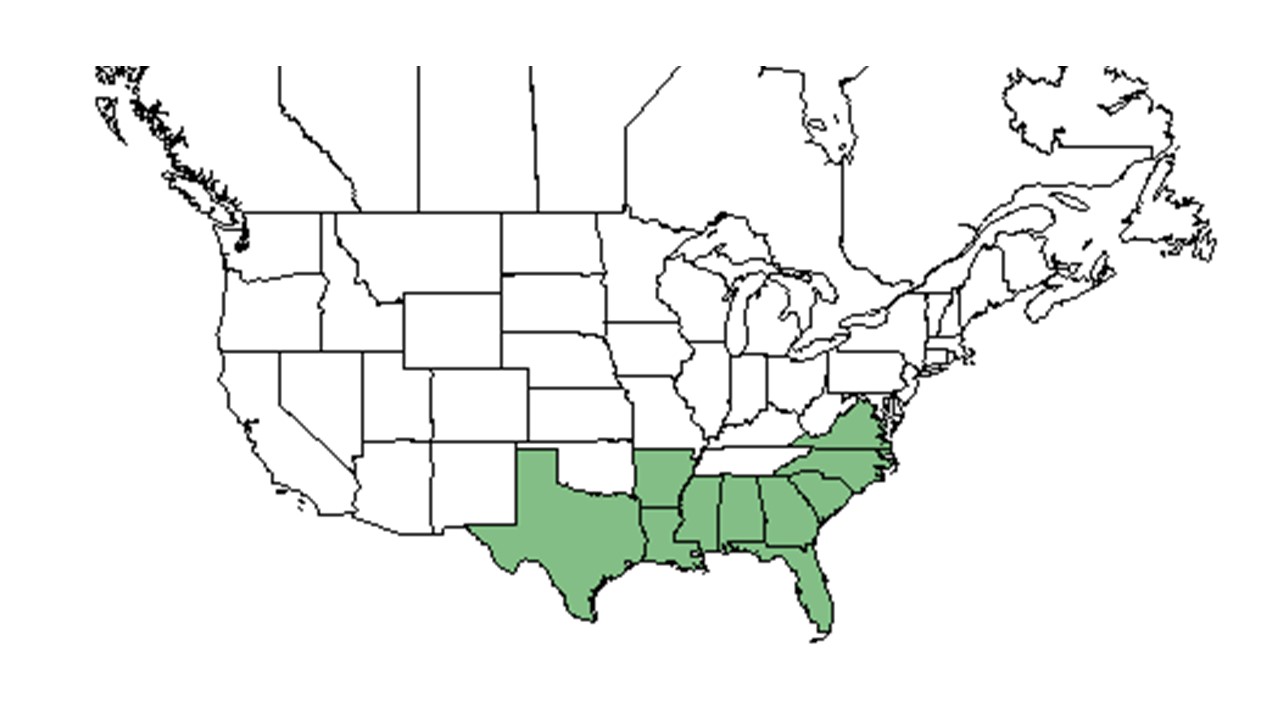Difference between revisions of "Hypoxis wrightii"
KatieMccoy (talk | contribs) (→Seed bank and germination) |
KatieMccoy (talk | contribs) |
||
| Line 45: | Line 45: | ||
===Pollination=== | ===Pollination=== | ||
===Use by animals=== <!--Herbivory, granivory, insect hosting, etc.--> | ===Use by animals=== <!--Herbivory, granivory, insect hosting, etc.--> | ||
| + | It has been observed, that in the first year post-fire there was a high rate of leaf destruction by grazing vertebrates, mainly, the cottontail rabbit and white tail deer (Herndon 1988). | ||
| + | |||
===Diseases and parasites=== | ===Diseases and parasites=== | ||
==Conservation and Management== | ==Conservation and Management== | ||
Revision as of 15:06, 6 January 2016
| Hypoxis wrightii | |
|---|---|

| |
| Scientific classification | |
| Kingdom: | Plantae |
| Division: | Magnoliophyta - Flowering plants |
| Class: | Liliopsida - Monocotyledons |
| Order: | Liliales |
| Family: | Liliaceae |
| Genus: | Hypoxis |
| Species: | H. wrightii |
| Binomial name | |
| Hypoxis wrightii (Baker) Brackett | |

| |
| Natural range of Hypoxis wrightii from USDA NRCS Plants Database. | |
Common name: Wright's star-grass
Contents
Taxonomic notes
Description
A description of Hypoxis wrightii is provided in The Flora of North America.
H. wrightii is a perennial, geocarpic herb with a cryptic life cycle. The stem is buried 2 to 3 centimeters below the soil surface with grass-like leaves arranged in a rosette above (Herndon 1988).
Distribution
Ecology
Habitat
Habitats include wet pine savannas, seasonally flooded prairies, moist roadsides, and in Florida has been found in limestone glades [1](FSU Herbarium; Herndon 1988). It can mostly be found in frequently burned communities due to the strong flowering response after fires (Herndon 1988). Grows in loamy calcareous sand and sandy loam. Associated species include Schoenus, Juniperus, and Sideroxylon (FSU Herbarium).
Phenology
H. wrightii is geocarpic with a cryptic life cycle. It produces both chasmogamous and cleistogamous flowers. Individuals bud and fruit throughout the entire year, however, reproductive activity is the highest during the rainy summer months and the lowerst during the dry winter months (Herndon 1988). Herbarium specimens have observed this species flowering in May (FSU Herbarium).
Seed dispersal
The seeds are small, and hard to differentiate without a microscope from other Hypoxis species. They are dull dark brown, with wrinkled, detached cuticles (Zona et al. 2009). Tepals persist on the seed through maturity and there is no obvious mechanism for seed dispersal (Herndon 1988).
Seed bank and germination
Quickly growing and reproducing after fire allows H. wrightii to disperse their seeds into ideal habitat for germination and establishment. The removal of the litter layer and the reduction in hardwoods allows increased light levels and an increase in soil fertility after fire allows for an increase in germination (Herndon 1988).
Fire ecology
H. wrightii grows frequently in burned communities and have a strong reproductive response to burning. It is favorable to grow and reproduce quickly after a fire, allowing for ideal seedling establishment and germination. Fire stimulates H. wrightii to produce a two flowered inflorescence with inflorescence produced immediately after fire being longer than those produced three or more months post-fire. Three months post-fire has been observed to be the highest reproductive period. Tepal length has also been recorded to be longer in flowers produced soon after fire compared to flowers produced later. The early chasmogamous flowers produce fewer seeds following a fire compared to later cleistogamous flowers. The transition from chasmogamous to cleistogamous flowers occurred rapidly, with chasmogamous flowers being produced for a maximum of four weeks. It is speculated that reproduction rates are high following fire due to increased light levels by removing the litter layer, soil fertility, and the increase in the availability of soil water and nutrient reserves (Herndon 1988).
Pollination
Use by animals
It has been observed, that in the first year post-fire there was a high rate of leaf destruction by grazing vertebrates, mainly, the cottontail rabbit and white tail deer (Herndon 1988).
Diseases and parasites
Conservation and Management
Cultivation and restoration
Photo Gallery
References and notes
Florida State University Robert K. Godfrey Herbarium database. URL: http://herbarium.bio.fsu.edu. Last accessed: October 2015. Collectors: Loran C. Anderson, Wilson Baker, Ann Johnson, L.B. Trott. States and Counties: Florida: Gadsden, Jackson, Wakulla. Compiled by Tall Timbers Research Station and Land Conservancy.